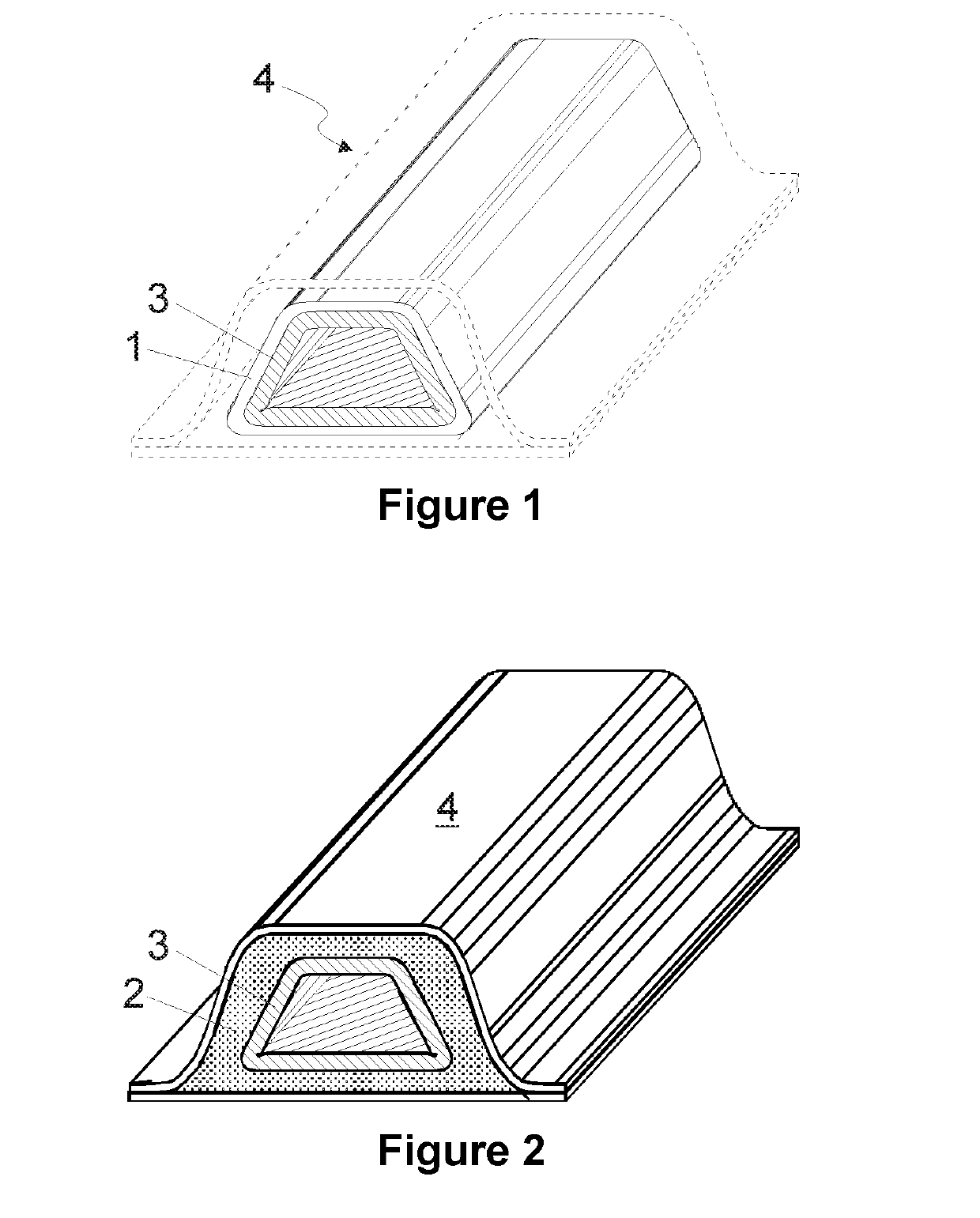Polyester prepolymers as impact modifiers in epoxy formulations
a technology of epoxy resin and modifier, applied in the direction of epoxy resin adhesives, adhesive types, adhesive types, etc., can solve the problems of destroying the bonded assembly, affecting the adhesion of the bonded assembly, and the performance of improving the impact strength properties, and the cost of nanoparticles is decidedly high, so as to improve the adhesion, improve the impact strength, and improve the effect of corrosion resistan
- Summary
- Abstract
- Description
- Claims
- Application Information
AI Technical Summary
Benefits of technology
Problems solved by technology
Method used
Image
Examples
Embodiment Construction
Abbreviations
[0182]MW average molecular weight[0183]m.p. melting point[0184]OHN OH number[0185]AN acid number[0186]BPA bisphenol A[0187]EEW epoxide equivalent weight
[0188]All quantity figures relate to parts by weight unless otherwise stated.
[0189]Products / compounds used in the examples were as follows
[0190]
PTHF 650Polyether, Polytetrahydrofuran, Mw: 625-675 g / molBASFDynacoll ®7330Semicrystalline polyester polyol, MW: 3500,Evonikm.p. 85° C., OHN: 27-34 mgKOH / g, AN: IndustriesDynacoll ®7331Semicrystalline polyester polyol, MW: 3500,Evonikm.p. 110° C., OHN: 27-34 mgKOH / g,IndustriesAN: Dynacoll ®7490Polyester polyolEvonikIndustriesDynacoll ®7340Semicrystalline polyester polyol, MW: 3500,Evonikm.p. 96° C., OHN: 27-34 mgKOH / g, AN: IndustriesEP431.01Polyester polyol, m.p. 110° C., OHN: 30 mgKOH / g,AN: 0.3 mgKOH / g (experimental product)EP431.02Polyester polyol, m.p. 116° C., OHN: 28 mgKOH / g,AN: 0.9 mgKOH / g (experimental product)IPDIIsophorone diisocyanateHypro X13HYPRO ® CTBN 1300X13, liqui...
PUM
| Property | Measurement | Unit |
|---|---|---|
| Tg | aaaaa | aaaaa |
| temperature | aaaaa | aaaaa |
| melting point | aaaaa | aaaaa |
Abstract
Description
Claims
Application Information
 Login to View More
Login to View More - R&D
- Intellectual Property
- Life Sciences
- Materials
- Tech Scout
- Unparalleled Data Quality
- Higher Quality Content
- 60% Fewer Hallucinations
Browse by: Latest US Patents, China's latest patents, Technical Efficacy Thesaurus, Application Domain, Technology Topic, Popular Technical Reports.
© 2025 PatSnap. All rights reserved.Legal|Privacy policy|Modern Slavery Act Transparency Statement|Sitemap|About US| Contact US: help@patsnap.com



